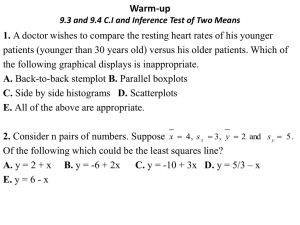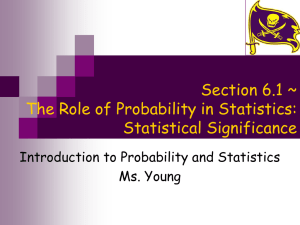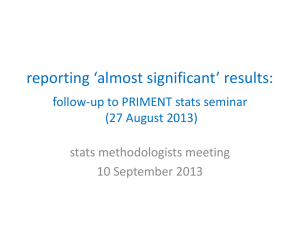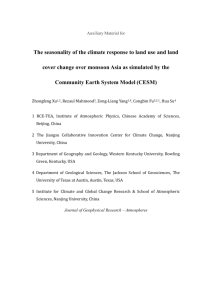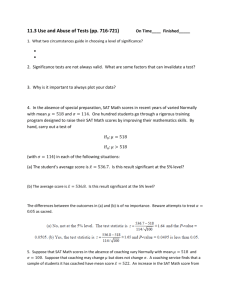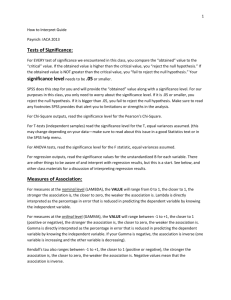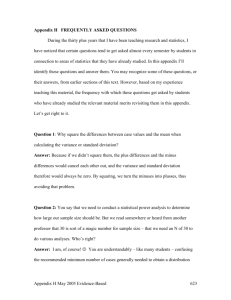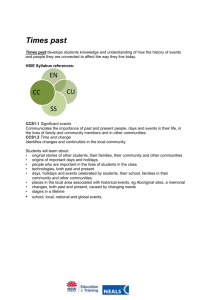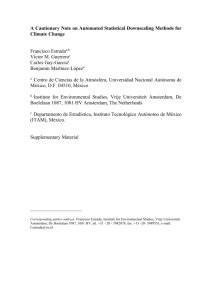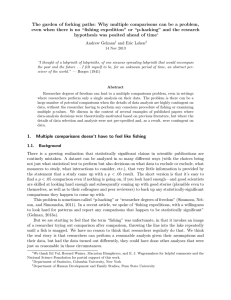Background
advertisement
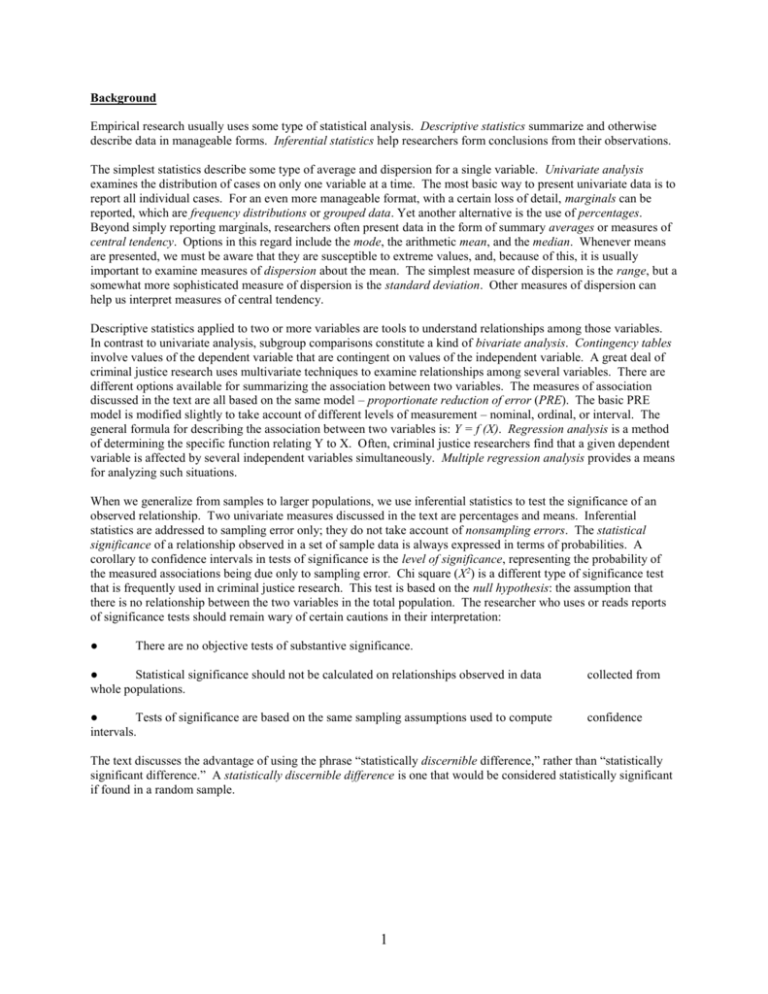
Background Empirical research usually uses some type of statistical analysis. Descriptive statistics summarize and otherwise describe data in manageable forms. Inferential statistics help researchers form conclusions from their observations. The simplest statistics describe some type of average and dispersion for a single variable. Univariate analysis examines the distribution of cases on only one variable at a time. The most basic way to present univariate data is to report all individual cases. For an even more manageable format, with a certain loss of detail, marginals can be reported, which are frequency distributions or grouped data. Yet another alternative is the use of percentages. Beyond simply reporting marginals, researchers often present data in the form of summary averages or measures of central tendency. Options in this regard include the mode, the arithmetic mean, and the median. Whenever means are presented, we must be aware that they are susceptible to extreme values, and, because of this, it is usually important to examine measures of dispersion about the mean. The simplest measure of dispersion is the range, but a somewhat more sophisticated measure of dispersion is the standard deviation. Other measures of dispersion can help us interpret measures of central tendency. Descriptive statistics applied to two or more variables are tools to understand relationships among those variables. In contrast to univariate analysis, subgroup comparisons constitute a kind of bivariate analysis. Contingency tables involve values of the dependent variable that are contingent on values of the independent variable. A great deal of criminal justice research uses multivariate techniques to examine relationships among several variables. There are different options available for summarizing the association between two variables. The measures of association discussed in the text are all based on the same model – proportionate reduction of error (PRE). The basic PRE model is modified slightly to take account of different levels of measurement – nominal, ordinal, or interval. The general formula for describing the association between two variables is: Y = f (X). Regression analysis is a method of determining the specific function relating Y to X. Often, criminal justice researchers find that a given dependent variable is affected by several independent variables simultaneously. Multiple regression analysis provides a means for analyzing such situations. When we generalize from samples to larger populations, we use inferential statistics to test the significance of an observed relationship. Two univariate measures discussed in the text are percentages and means. Inferential statistics are addressed to sampling error only; they do not take account of nonsampling errors. The statistical significance of a relationship observed in a set of sample data is always expressed in terms of probabilities. A corollary to confidence intervals in tests of significance is the level of significance, representing the probability of the measured associations being due only to sampling error. Chi square (X2) is a different type of significance test that is frequently used in criminal justice research. This test is based on the null hypothesis: the assumption that there is no relationship between the two variables in the total population. The researcher who uses or reads reports of significance tests should remain wary of certain cautions in their interpretation: ● There are no objective tests of substantive significance. ● Statistical significance should not be calculated on relationships observed in data whole populations. collected from ● Tests of significance are based on the same sampling assumptions used to compute intervals. confidence The text discusses the advantage of using the phrase “statistically discernible difference,” rather than “statistically significant difference.” A statistically discernible difference is one that would be considered statistically significant if found in a random sample. 1




